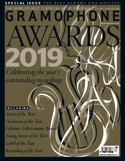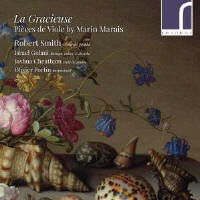Texte paru dans: / Appeared in: |
|
 |
Outil de traduction (Très approximatif) |
|
Reviewer:
Mark Seow It was many years ago in Dartington, the early music haven where the Devon air is infused with the song of Emma Kirkby and the ground is dented by socks in sandals, when I first heard Marin Marais performed on a solo viola da gamba. I thought I had stumbled upon the soundtrack of heaven. Such moments of himmlisches Freudenmahl have since been few and far between, but on hearing Robert Smith and his continuo team on this wonderful disc I was transported to that youthful summer when music was charged with inquisitiveness, friendship, beer, dance and play. Smith’s playing locks into all these things: he is sympathetic, generous, introspective, romantic, adventurous in timbre – from the melancholic and disturbingly eerie in the Plainte from the Suite in G minor to the stately, then buoyant, then gruff Fugue gaie from the Suite in E minor – and his palette of sounds is enviably characterful. In La Gracieuse, the movement from the Suite in A after which the album is named, affectionate pizzicato opens out into a gorgeous melody in which Smith is expertly supported by his viola da gamba partner Joshua Cheatham (the music is shaped with such psychic tenderness that it is easy to overlook that we are listening to multiple people here joined in harmonic telepathy). The overall listening experience is well crafted and charts an interesting journey. Marais composed his five livres of pieces for one, two and three bass viols between 1686 and 1725: the Pièces de viole represent a life’s work. Smith does well to curate suites according to key that feel coherent and balanced. We are treated with the vigorous multiplestopping that is characteristic of Marais’s early style, as well as the sumptuous melodic writing of the later books. The sound, produced by Adam Binks, is excellent. Gramophone talks to... Robert Smith The viola da gamba player talks about his enthusiasm for the music of Marin Marais, whose suites he has recorded with splendid results
How did you
discover the music of Marin Marais, and what are its special qualities? Pretty soon after I started studying the viola da gamba in Amsterdam, that time as a second instrument to the baroque cello, my teacher Mieneke van der Velden put the music for Marais’s Folies d’Espagne in front of me. Although it was a huge challenge for me, I was hooked – and who wouldn’t be? The piece is such a roller coaster of characters, timbres and techniques that the whole glorious world of the viola da gamba opened up before me and swallowed me right in.
I would say that Marais was my
gateway composer to the French Baroque. Through Marais I was able to gain the
understanding needed to appreciate the works of François Couperin, for example,
that may otherwise have seemed a bit stuffy and aloof. And that’s no accident:
when playing Marais you get the feeling that the composer is standing
supportively by your side, gently encouraging you to progress technically and
explore the rich sound world contained within the instrument. A generous
pedagogue, he painstakingly engraved his scores with all sorts of ornaments,
ingerings and expressions to help the performer. I’m convinced that all of his
compositions were made not only from a desire to express beauty but also to
share it, and that makes all the difference for me. Marais wrote suites uni ied by their tonality, yet you sometimes mix and match to create custom-made suites. Why is this?
Unlike some other composers from the French Baroque, Marais’s suites were probably not intended to be played from start to inish. You often ind a number of préludes at the start of a suite, followed by a number of allemandes etc – the message being to pick and mix as you see it. I did stretch this principle by stealing some pieces from other volumes (Marais wrote ive volumes of Pièces de viole), but there were good reasons, like including a spectacular, devilish and never-before recorded fugue in E minor. How did Marais’s style develop? Is there much difference between his irst and last books of viol music? There’s a huge stylistic development. Marais’s irst two books hark back to the style of his own teacher, Sainte-Colombe, with very free préludes and extended dance suites while the latter three volumes lay increasing focus on the so-called character pieces, such as Le Badinage, La Rêveuse or Le Jeu de Volant (badminton). In addition to this Marais became increasingly clever at getting the most effect out of the viol with the least effort, with the later pieces being in many respects easier and more transparent.
Will you record more Marais?
Absolutely – this recording represents only about ive per cent of Marais’s works for solo viola da gamba so there is still a lot to do. For the moment, though, I’m focusing on a recording of the Bach gamba sonatas with harpsichordist Francesco Corti. |
|




